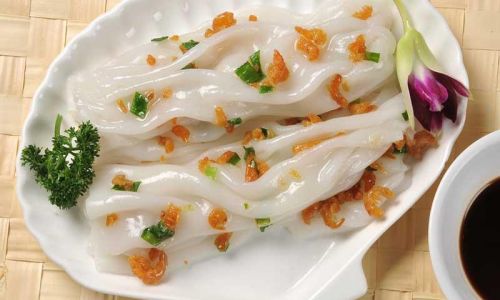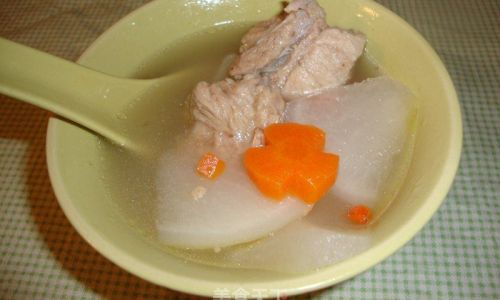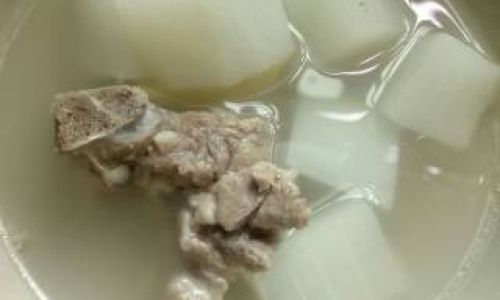Introduction
Steamed rice noodles, commonly known as Cheong Fun in Cantonese cuisine, are a staple dish enjoyed across various regions in China, particularly in Guangdong province. These delicate, translucent noodles are often served with an array of toppings and sauces, making them a versatile and delicious meal option. Whether you’re a seasoned chef or a home cook eager to explore new culinary delights, learning how to make steamed rice noodles can add a delightful dimension to your culinary repertoire. This comprehensive guide will walk you through the entire process, from preparing the ingredients to perfecting your steaming technique, ensuring you achieve the authentic, soft, and fluffy texture that Cheong Fun is renowned for.
Section 1: Understanding the Basics
Before diving into the recipe, it’s crucial to understand the fundamentals of making steamed rice noodles. Cheong Fun is primarily made from a rice flour batter, which is poured onto a steaming tray and cooked until translucent and tender. The key to success lies in the consistency of the batter, the steaming process, and the choice of toppings and sauces that elevate the dish.

1 Ingredients Overview
- Rice Flour: The cornerstone of Cheong Fun, rice flour provides the necessary structure and texture. It’s essential to use high-quality rice flour to ensure smooth and silky noodles.
- Water: Used to mix with the rice flour, creating a pourable batter. The ratio of water to rice flour is critical for achieving the right consistency.
- Salt: A pinch of salt enhances the flavor of the noodles.
- Oil: A small amount of oil prevents sticking and adds a slight gloss to the finished noodles.
- Toppings and Sauces: Common toppings include shrimp, pork, beef, vegetables, and bean sprouts. Sauces such as soy sauce, hoisin sauce, chili sauce, and sesame oil are used to flavor the dish.
2 Equipment Needed
- Steamer: A traditional bamboo steamer or an electric steamer works well. Ensure it’s clean and well-oiled to prevent sticking.
- Steaming Tray: A flat, heat-resistant tray that fits inside your steamer. Silicone mats or parchment paper can also be used to line the tray.
- Mixing Bowls: For preparing the batter.
- Whisk or Spoon: For mixing the batter.
- Spatula or Knife: For lifting the steamed noodles from the tray.
- Measuring Cups and Spoons: For accurate ingredient measurement.
Section 2: Preparing the Batter
The batter is the foundation of your Cheong Fun. Achieving the perfect consistency is crucial for smooth, non-sticky noodles.
1 Measuring Ingredients
Begin by measuring out your rice flour and water accurately. A common ratio is 1 part rice flour to 1.5 to 2 parts water, but this can vary based on personal preference and the type of rice flour used. Add a pinch of salt to enhance flavor.
2 Mixing the Batter
In a large mixing bowl, combine the rice flour and salt. Gradually add the water, whisking continuously to avoid lumps. Continue mixing until you achieve a smooth, pourable batter. It should be thick enough to coat the back of a spoon but thin enough to pour easily. If the batter is too thick, add a little more water; if it’s too thin, add a bit more rice flour.
3 Resting the Batter
Let the batter rest for at least 30 minutes to an hour. This allows the flour to absorb the water fully, resulting in smoother and more tender noodles. Cover the bowl with a damp cloth to prevent a skin from forming on the surface.
Section 3: Setting Up for Steaming
Proper preparation of your steaming equipment is essential for successful steaming.
1 Preparing the Steamer
Fill the bottom of your steamer with water and bring it to a boil. If using a bamboo steamer, soak it in water for about 10 minutes to prevent it from drying out and cracking during steaming. Ensure the steaming tray is clean and lightly oiled.
2 Oiling the Tray
Lightly brush the steaming tray with oil. This will prevent the noodles from sticking to the surface. Alternatively, you can use silicone mats or parchment paper lined with a thin layer of oil.

Section 4: The Steaming Process
Now, it’s time to steam your rice noodles. This step requires patience and attention to detail.
1 Pouring the Batter
Once the steamer is boiling, quickly pour a thin layer of batter (about 1/4 cup) onto the oiled tray. Spread it evenly and quickly using the back of a spoon or a ladle. The thinner the layer, the more tender and translucent the noodles will be.
2 Steaming
Place the tray in the steamer and cover immediately. Steam for about 2 to 3 minutes, or until the noodles are translucent and cooked through. The edges should start to curl up slightly. Avoid over-steaming, which can make the noodles tough.
3 Removing the Noodles
Carefully remove the tray from the steamer. Use a spatula or knife to lift the noodles from the tray and transfer them to a plate. Be gentle to avoid tearing. Repeat the process with the remaining batter, stacking the noodles on top of each other as you go. You can lightly oil the tray between batches to prevent sticking.
Section 5: Adding Toppings and Sauces
The versatility of Cheong Fun lies in its customizable toppings and sauces.
1 Preparing Toppings
Common toppings include shrimp, pork, beef, and vegetables. These can be cooked separately and placed on top of the noodles. For example, shrimp can be sautéed with garlic and ginger, while pork or beef can be thinly sliced and marinated before quick stir-frying. Vegetables like bean sprouts, Chinese broccoli, or spinach can be lightly blanched.
2 Making Sauces
A blend of soy sauce, hoisin sauce, chili sauce, and sesame oil creates a flavorful base. You can adjust the proportions to suit your taste. Some also add a splash of rice vinegar or lime juice for a tangy kick.
3 Assembling the Dish
Place a few pieces of steamed rice noodles on a plate. Arrange your chosen toppings over the noodles. Drizzle with the prepared sauce mixture, ensuring every bite is flavorful. Garnish with chopped scallions, cilantro, or sesame seeds for added texture and flavor.

Section 6: Tips for Perfect Cheong Fun
Achieving perfect Cheong Fun takes practice, but these tips can help you along the way.
1 Consistency is Key
The consistency of the batter is crucial. It should be pourable but not too runny. Adjust the water-to-rice flour ratio as needed.
2 Practice Makes Perfect
Steaming requires practice to get the timing right. Keep an eye on the noodles to prevent overcooking.
3 Experiment with Toppings
Don’t be afraid to experiment with different toppings and sauces. The combinations are endless, and your preferences will evolve over time.
4 Use High-Quality Ingredients
Invest in high-quality rice flour and fresh ingredients for the best results. The quality of your ingredients will directly impact the taste and texture of your Cheong Fun.
5 Storage
Leftover steamed rice noodles can be stored in the refrigerator for a few days. Reheat them gently in the microwave or steam them for a short time to restore their texture.
Conclusion
Making steamed rice noodles (Cheong Fun) may seem daunting at first, but with patience, practice, and the right techniques, you can achieve delicious, authentic results. This comprehensive guide has provided you with the fundamental knowledge, step-by-step instructions, and helpful tips to get you started. Remember, the beauty of Cheong Fun lies in its versatility—feel free to customize the toppings and sauces to suit your taste. Enjoy the process of creating this delicious dish and share your culinary creations with friends and family. Happy steaming!






0 comments